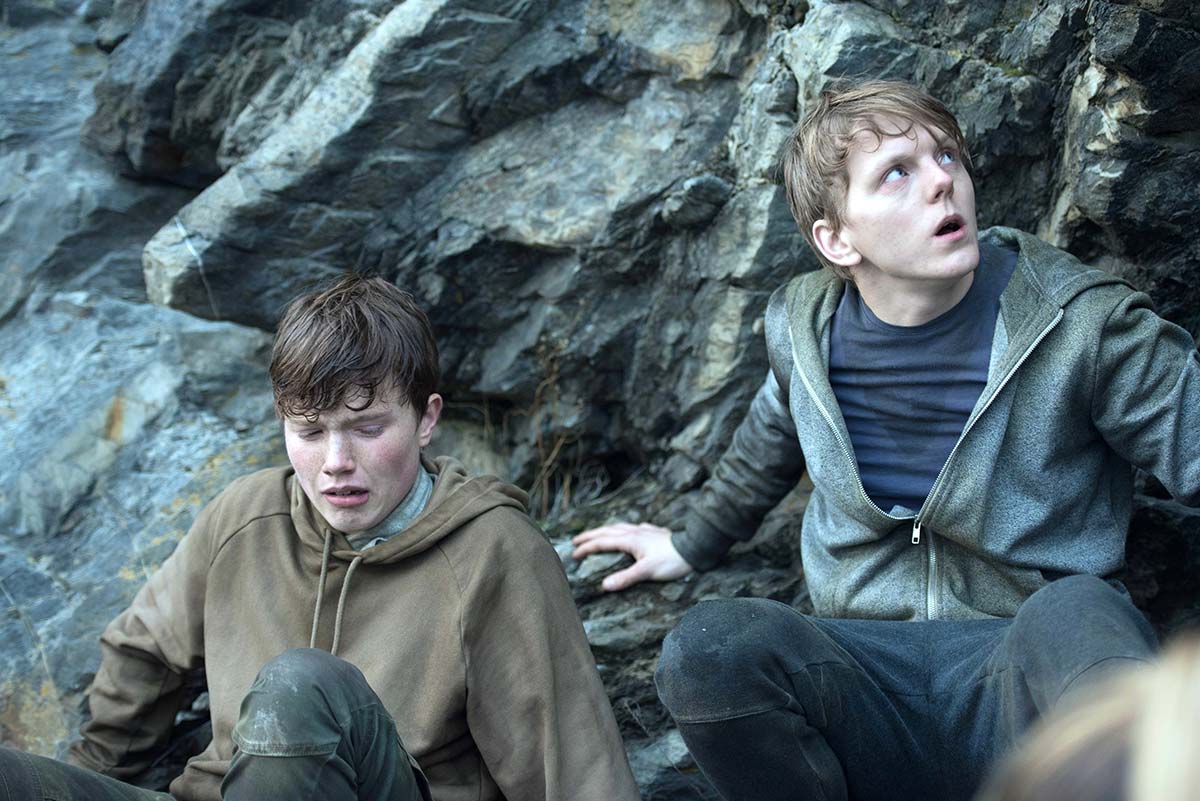In practically no way does Paul Greengrass‘ forensic recreation of terrorist Anders Breivik‘s 2011 massacre on Utøya island and its aftermath, “22 July” resemble its Venice competition stablemate, “First Man.” But the space-storm-in-a-teacup debate that flared up briefly over the absence of a flag-planting scene in Damien Chazelle‘s film does have a strange, inverse parallel in one of the key choices that Greengrass makes: if the arguments over “First Man” prompt us to question the degree to which any nation “owns” the achievements of its past and the manner in which they are portrayed, the presentation of “22 July” in Norwegian-accented English forces us to ask how much a nation owns its tragedies.
READ MORE: 55 Must-See Films: The 2018 Fall Movie Preview
On the one hand, the language decision is easy to understand — this is a Netflix film, directed by a filmmaker whose native tongue is English and to whom the task of dramatizing the stories of real-life tragedies and terrorist acts has been entrusted repeatedly. From “Bloody Sunday” to “United 93” to “Captain Phillips,” Greengrass has proven his sensitivity and intelligence time and again in balancing the demands of storytelling “entertainment” with an awareness that real people lived and died the events he’s recreating, and real people still live with their consequences. Here, that instinct for authenticity remains — hence the defiantly un-Hollywood casting of Norwegian actors in all the key roles. But it’s compromised by the language of the screenplay, in a way that does not just rob the defining event of recent Norwegian history of a little of its Norwegian-ness, but also undermines the film’s powers of immersion. Crudely put: it is distancing to hear people cry for help or speak anguished, halting truths from their hearts in a second language, and for all the bruising effectiveness of the filmmaking at times, it’s a distraction which “22 July” never quite overcomes.
READ MORE: Venice Film Festival Preview: 20 Most Anticipated Movies
This is the second film this year to tackle these events. The first, Erik Poppe‘s Berlin competition title “U – July 22” caused its own controversy, in being concerned solely with the attack and delivered in one, almost context-free technically impressive, bludgeoningly effective but ethically questionable real-time take. Is it a work of empathy or exploitation? Greengrass’ movie avoids that particular moral quagmire by covering not just the attack, but, over the course of an increasingly talky 143 minutes, also the political fallout, the mounting of Breivik’s defense, the eventual trial and the story of the slow recuperation of one of his victims. If anything, he provides a bit too much context, as though determined to find some moral uplift where little is readily apparent. So one can think of Poppe’s film as the open wound, raw and possibly gratuitously painful, and Greengrass’ version as the attempt to find some healing. Even the tachycardiac shaky-cam with which Greengrass is most associated is kept to a minimum, especially in the second half, in favor of vignetted, crepuscular digital photography from DP Pål Ulvik Rokseth, whose calmer frames often leave faces in shadow while bright snow blasts in white through windows.
’22 July’ Trailer: Paul Greengrass Explores The Horrors Of Terrorism Again
But it does start with the attack and, all prior reservations notwithstanding, this section is a profoundly affecting, assaultive experience. The camera swoops down on a farmhouse in the woods, where a small mixer is churning chemicals, and a man is methodically, with horrible deliberation, loading gaffer-taped sacks of homemade explosive into a truck. This is Breivik, played by Anders Danielsen Lie in a superb performance that negotiates a clever path between the towering man of destiny Breivik sees himself as, and the egomaniacally deluded creep he really is. Cross-cutting between him, the Prime Minister (a stiffer Ola G. Furuseth) in discussion about his impending visit to the Utøya youth camp, and the camp itself at which the teenage children of Norway’s best and brightest are hanging out around campfires and playing football, the film clicks along with the remorselessness of a countdown under the glimmering menace of Sune Martin‘s score.
Breivik sets off a van bomb which demolishes half a block in the governmental center of downtown Oslo and kills eight people, while he is already en route to the island. The news of the bomb spreads, and we witness the cruel irony of the camp’s worried kids phoning their parents in Oslo to make sure they’re ok. In particular, we focus on the popular Viljar (Jonas Strand Gravlik) who is there with his two best friends and his little brother Torje (Isak Bakli Aglen) and seems to have a shy flirtation going on with Lara (Seda Witt). Viljar’s mother, involved in politics herself, is near the bomb site in Oslo inquiring after acquaintances when she gets a second call from her son. Clinging to the side of a cliff with Torje and a few others, hiding from the prowling Breivik above, he manages one quick horrid sentence — “He’s shooting at us.” — before the call ends.
The cluster of students is discovered and Breivik starts to pick them off, shouting incoherent slogans about “liberals and elites” that have a wincing resonance for anyone who’s watched a single news report in the last two years or so. Torje narrowly escapes, but Viljar is shot in the leg, the hand, the shoulder, and the head and left for dead on the gray stony beach. Much of the latter half of the film will be concerned with his borderline miraculous escape from death, and his slow journey to recovery before he again comes face to face with Breivik, this time in a clinical Oslo courtroom.





